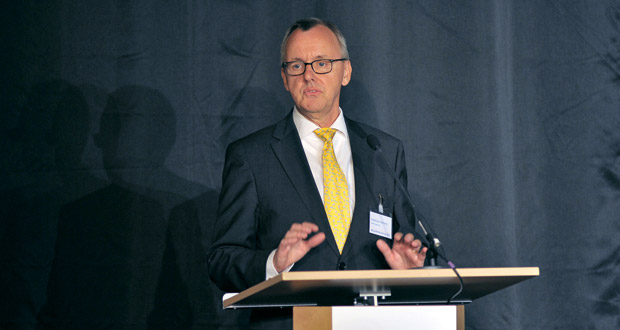Last year, domestic lignite once again supplied just under a quarter of the electricity in Germany and therefore made a significant contribution to supply reliability. Despite exhausting all energy saving options, numerous studies show that the electricity demand will increase noticeably over the next three decades, from 500 TWh at present to up to 800 TWh. The future of energy is electric.
“In 2030, just over half of electricity consumption in Germany will have to be covered by the variable and reliable capacity of conventional power stations and, during periods of little sunlight and no wind, the proportion will be even greater,” explained the Chairman of the Executive Board of the German Lignite Association (DEBRIV), Matthias Hartung, at this year’s lignite convention in Cologne/Germany (Figure 1). Lignite is an indispensable partner when it comes to meeting this demand, because it is a readily available domestic resource and does not have to be imported from far-flung or unstable regions. It provides domestic added value, efficient regional structures and employment.
Germany can use lignite to achieve its ambitious climate targets and to guarantee a reliable power supply. “We will participate intensively in the forthcoming debates on the implementation of the climate protection plan and make the case that the developments desired by the mining states will be taken into account in the lignite regions by means of a balanced weighting of the diverse aspects of domestic energy production. We are fulfilling our significant CO2 reduction contributions as part of the European Emissions Trading Scheme,” explained Hartung. The transfer of older power station units to the emergency pool of reserve power is a first step towards ensuring a reduction in CO2 emissions from lignite power stations of around 15 %. Overall lignite use is developing in line with the national and European CO2 reduction targets.
Hartung explained that CO2 emissions from lignite in the Rhineland will fall by 40 to 50 % by 2030, partly due to the discontinuation of the Inden open-pit mine. Other contributions are made by increasing efficiency and changing the capacity utilisation of existing lignite power stations, the plans for open-pit mining in Lusatia and in the Central German lignite mining district, which have also provided considerable reductions in CO2. The Chairman of the DEBRIV Executive Board stresses that he is unaware of any other sector of the national economy declaring CO2 reduction targets of this scale. Instead of continually setting new national climate goals, DEBRIV advocates meaningful use and further development of the functioning European Emissions Trading Scheme (ETS). He adds that the ETS is an effective, cost-efficient instrument for climate protection with equitable burden sharing. National measures and goals are allegedly largely ineffective by comparison and have damaged the German economy. (DEBRIV/Si.)
